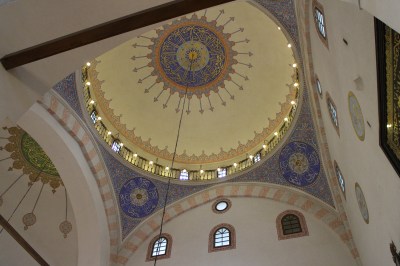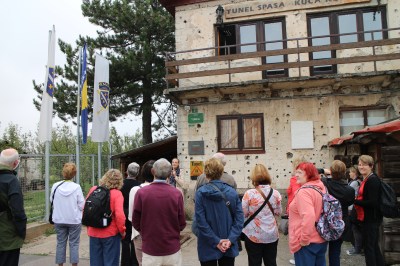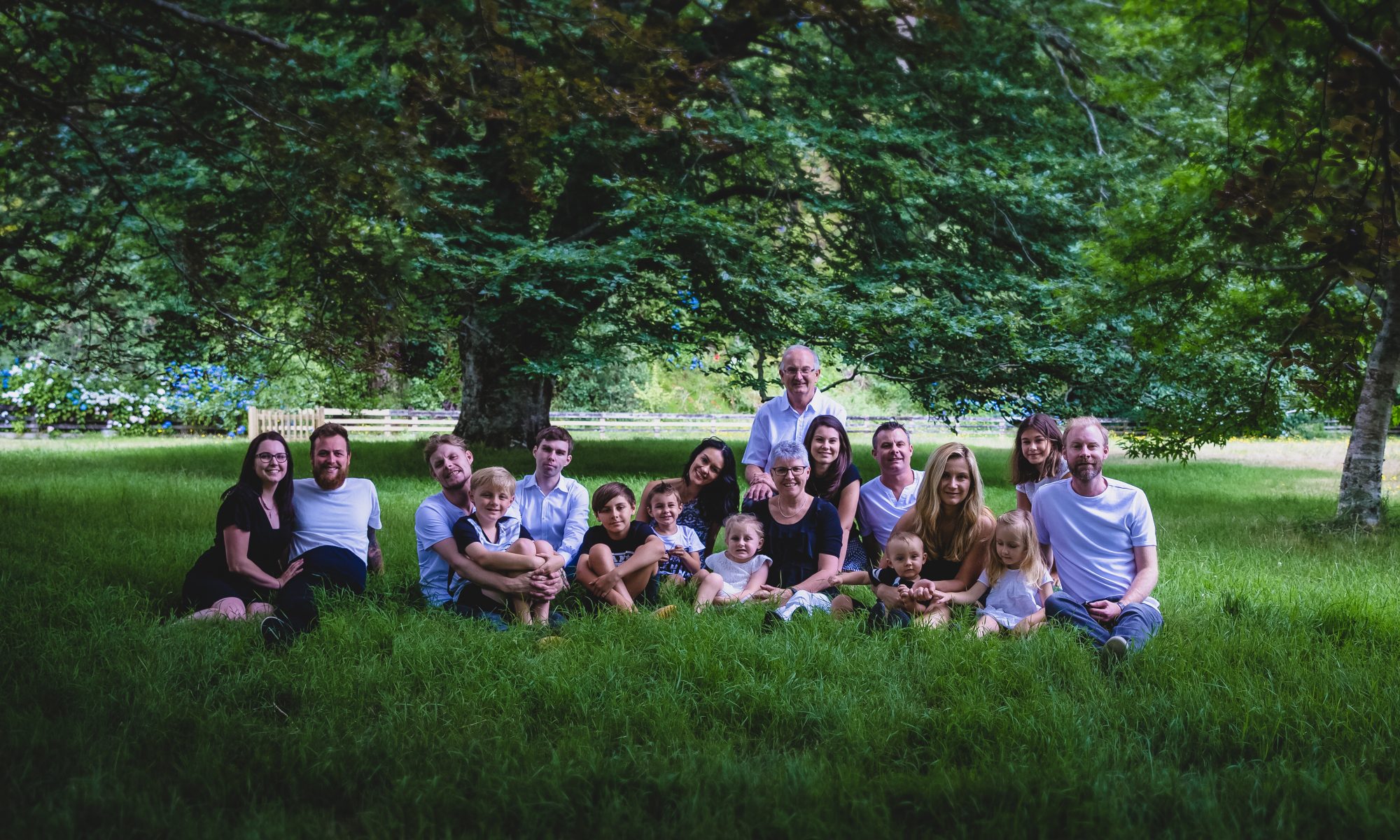Now describing our time in Sarajevo is going to be very emotional for me! Talk about a city that has suffered so much destruction!
The whole city is still covered in scars and those are the visual ones. I believe the people are still learning to live with the consequences of the war, and those scars that it left are not so visual! Our local tour guide Nera was only seven when the war started and she shared many of her experiences with us. She remembered eating only pasta, rice, and American rations, no salt or sugar for 4 years.

Sarajevo is the capital and largest city of Bosnia and Herzegovina. The city is nestled within the greater Sarajevo valley of Bosnia, it is surrounded by the Dinaric Alps and situated along the Miljacka River. Unfortunately it’s position in the valley made it easy for the Serb forces to surround it, and very difficult for the people to protect themselves and also to get out safely.
The Bosnian War for independence lasted from the 5th of April 1992 to the 29th of February 1996. The city’s residents endured 175 artillery shells falling each and every day! During the siege, 11,541 people lost their lives, including over 1,500 children. An additional 56,000 people were wounded, including nearly 15,000 children. How extremely sad 🙁
From our hotel window we could see the surrounding mountains and sensed a little of how vulnerable Sarajevo was.



We commenced our Sarajevo discovery with a walking tour through the old city. Narrow marbled streets with little shops, cafes and restaurants, and churches of every denomination.


A Quote from Wikipedia…
“The city is famous for its traditional cultural and religious diversity, with adherents of Islam, Judaism and Catholicism Orthodoxy, coexisting there for centuries. Due to this long and rich history of religious and cultural variety, Sarajevo was sometimes called the “Jerusalem of Europe”or “Jerusalem of the Balkans”. It was, until recently in the 20th century, the only major European city to have a mosque, Catholic church, Orthodox church and synagogue within the same neighborhood”.









Along the pavement through the city are plaques with red paint splattered on them to show the ‘rivers of blood’ that ran down the streets ! A memorial of lives lost fighting for this nation!
We stopped at a local restaurant for lunch and sampled some of the local food. Little mincemeat sausages in a bread like a panini and served with a yoghurt drink. They were actually very nice.


We wandered further and then were given a Turkish coffee each to sample. It was very strong with all the coffee grindings at the bottom…. almost like sand!



During our stay in Sarajevo we also went out to the historic site of the Sarajevo Tunnel – Known as the ‘Tunnel of life’. Wikipedia describes this tunnel far better than I can…
“The Sarajevo Tunnel was constructed between May 1992 and November 1995, during the Siege of Sarajevo in the midst of the Bosnian War. It was built by the Bosnian Army in order to link the city of Sarajevo, which was entirely cut-off by Serbian forces, with Bosnian-held territory on the other side of the Sarajevo Airport, an area controlled by the United Nations. The tunnel linked the Sarajevo neighbourhoods of Dobrinja and Butmir, allowing food, war supplies, and humanitarian aid to come into the city, and people to get out. The tunnel became a major way of bypassing the international arms embargo and providing the city defenders with weaponry”






My niece Teresa, who was on the tour with us had just finished reading the book ‘Goodbye Sarajevo’ (by Atka Reid and Hana Schofield). Everything we saw there just meant so much more to her as the events of the war are well described in the book. I was so impressed with her knowledge that I downloaded the book on my Kindle and started reading it straight away. I have finished reading it now and highly recommend it as a ‘Must read book’. Please comment this post and let me know what you think about it once you have read it too 🙂 Of course a trip to Sarajevo completes it nicely 🙂
We also experienced a meal with a local family….. but that is another story and a great one at that! Sarajevo part two will follow 🙂


A wonderfully descriptive post Pam. I too have poignant memories from Sarajevo. While some would like to forget the past (let bygones be bygones etc), there’s so much to learn from their troubled times. Those times came with a terrible cost. They choose to put up these reminders, and I think that is important, because there so much that should NOT be forgotten.
Great write up Pam. Thank goodness you have the time at present to put our holiday all together. Thank you so much.
Well done!